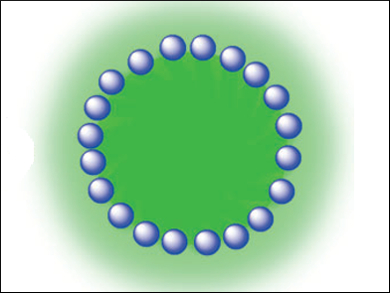Platinum drugs have been widely used as clinical anti-tumor agents, but they have severe side effects and short circulating time in blood. Nanodrugs can preferentially accumulate within solid tumors, thus reducing off-target toxicity and improving the therapeutic index.
Zhigang Xie, Changchun Institute of Applied Chemistry, Chinese Academy of Sciences, and colleagues prepared two fluorescent nanodrugs based on small-molecule cyanine-platinum conjugates (E)-4-(2-(1H-indol-3-yl)vinyl)-pyridine-platinum (HIP-Pt) and (E)-4-(2-(1-methyl-1H-indol-3-yl)vinyl)-pyridine-platinum (MIP-Pt). The conjugates, which comprise a hydrophobic cyanine dye moiety and a hydrophilic cisplatin-like moiety, self-assemble in water to form nanoparticles approximately 70 nm in diameter.
These nanodrugs combine the advantages of high drug content and nanoscale sizes. Moreover, HIP-Pt and MIP-Pt exhibited enhanced fluorescence in their nanoparticle formulation. The nanoparticles could be endocytosed by cancer cells and showed high cellular proliferation inhibition. These results demonstrate the promise of the self-assembly of small-molecule drugs with both imaging and therapeutic functions for the development of novel nanomedicines.
- Amphiphilic Cyanine-Platinum Conjugates as Fluorescent Nanodrugs,
Tingting Sun, Zhigang Xie,
Chem. Asian J. 2015.
DOI: 10.1002/asia.201501163




